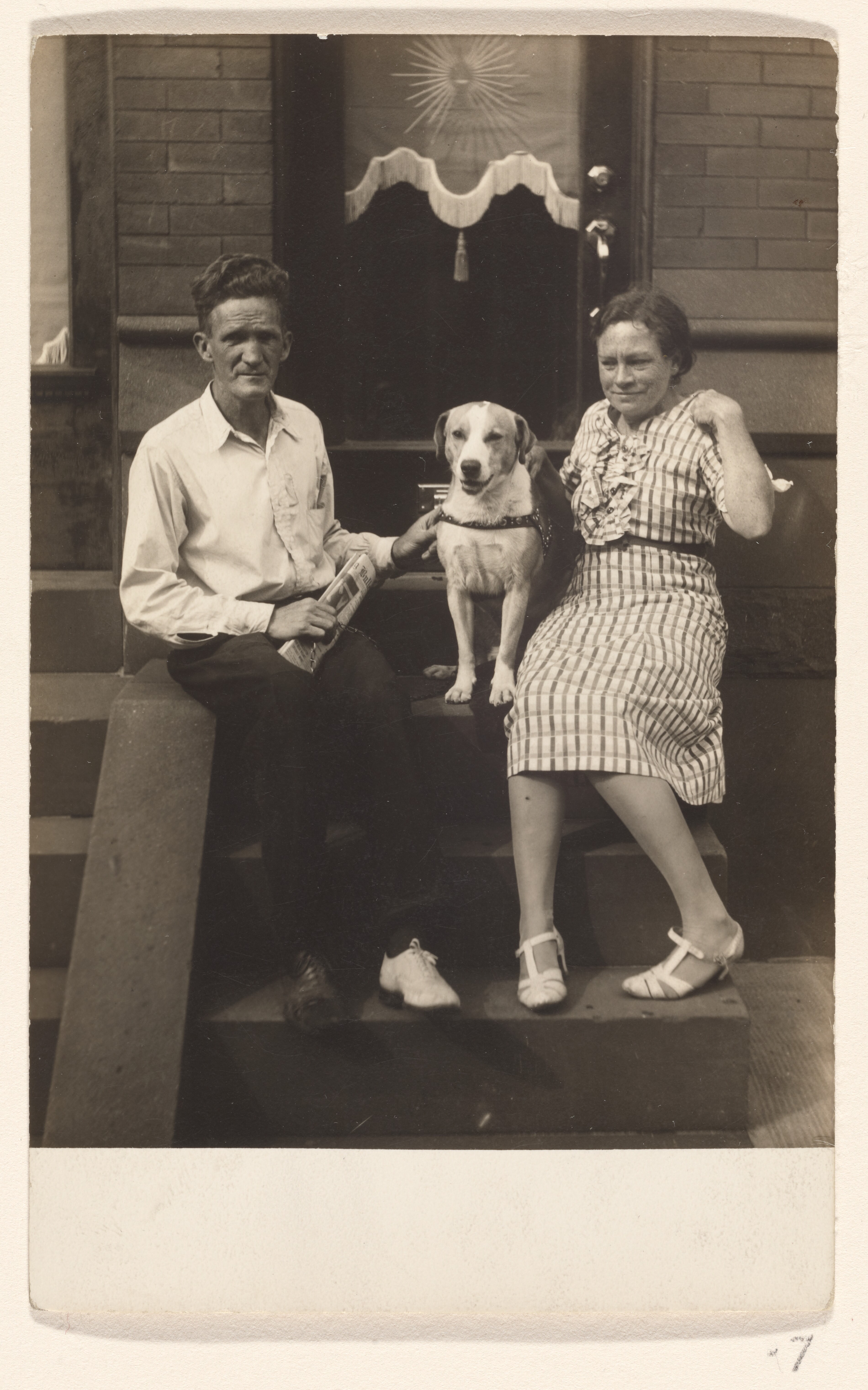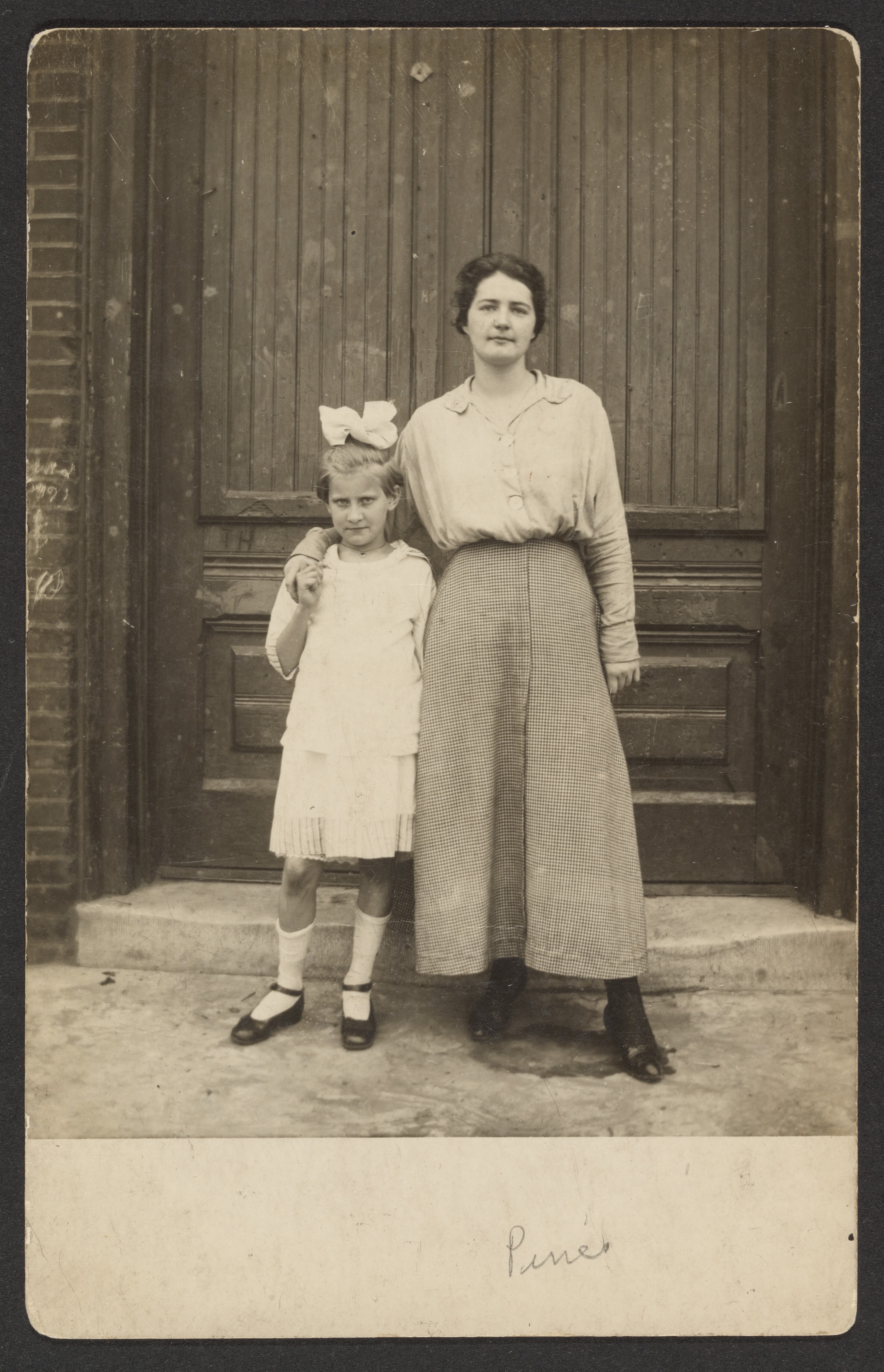Born into a farming family in Bucks County, Pennsylvania, Keith moved with his parents and sister at the age of 10 to Philadelphia. Around 1900, he was sent to George School, a Quaker boarding school in Newtown, Pennsylvania with an emphasis on visual arts education, where he began to pursue interests in photography and chemistry. Upon his return to Philadelphia, he worked as a bookkeeper in the fishing industry and began to make portraits in his spare time of the residents of Kensington and South Philadelphia. From approximately 1910–1940, he photographed hundreds of residents on their front stoops, creating an informal archive of these neighborhoods in the interwar period and Great Depression.

Keith’s portraits are strikingly direct and intimate—qualities that likely resulted from his working methods as well as the peculiarities of his inexpensive, fixed-focus camera. In contrast to studio photographers, Keith chose to portray his subjects on their front stoops or standing in front of their homes. Likely due in part to their comfort with their surroundings, many of the people in his photographs appear at ease, striking playful and animated poses (see 84.XP.707.36 and 84.XP.447.3). Families lounge on their front steps and pose with their dogs (84.XP.447.9 ; 84.XP.447.7). As a resident of West Kensington, it is possible that Keith knew many of the people he photographed personally. Alongside his day job at the Eastern Fish Company (and, as of 1920, at the Teamster labor union), Keith also traveled to South Philadelphia to photograph residents outside their homes and workplaces. In 1922, following his mother’s death, Keith left Kensington and began renting rooms in other areas of the city, living “among the people he photographed.”1 His movements within the city are instructive: in many ways, his portraits hover between affectionate views from within these communities and an almost ethnographic lens on working-class life (84.XP.447.6).
In Keith’s photographs, the front stoops of urban row houses and brownstones serve as a kind of stage where families and friends congregate and children play. As his fixed-focus camera required him to stand at mid-range from his subjects, his portraits always include details of the streetscape. However, they often reflect an eye for composition, suggesting that Keith’s inclusion of architectural details was more than just a technical necessity (84.XP.707.42). Several of Keith’s subjects are pictured in front of what appear to be factory doors and yards (see 84.XP.707.40 and 84.XP.447.8), reflecting the predominantly working-class character of Kensington—a regional center of the textile industry—and South Philadelphia, a community shaped by the shipyards and wharves of the waterfront. Photographing communities that have been described as dominated by industry, where “work—perhaps as much as religion, family, and ethnicity—defined an individual’s social role,”2 Keith’s portraits testify to more personal and intimate facets of everyday life that exceed the spheres of the factory and warehouse. In addition to his street portraits, he also photographed bucolic nature scenes and group outings on the rivers and creeks of the city (84.XP.707.35 ; 84.XP.707.39).3

Using a darkroom in his attic, Keith printed his photographs on a variety of postcard stock. He is not known to have requested direct payment for his portraits, preferring to give them to those he photographed, though research suggests that he also placed copies of his postcards at corner stores for residents to purchase. This potentially accounts for multiple surviving prints of the same negative (see e.g. 84.XP.707.33 and here). The hundreds of photographs attributed to Keith in public collections suggest that his postcards generally did not circulate by mail and instead remained largely local, held privately in family albums or shared among friends. Keith rarely noted the names of his subjects; the names and addresses that do appear on his postcards were jotted down by a variety of hands, likely added later by those pictured or by their relatives and friends. These inscriptions, including German, Irish, and Italian names, often reflect the recent immigration history of Kensington and South Philadelphia. However, despite the mass migration of Black communities from the South to Philadelphia during World War I through to the end of the 1920s, Black residents are absent from the photographs attributed to Keith in museum and library collections.4
In his later years, Keith appears to have left his job at the labor union, working at photographic studios while continuing to make informal street portraits. In the 1930 federal census, he declared his employment as a ‘Photographer’ at an unspecified local studio and is also known to have worked as a developer for the local photographer ‘Yaeckel’. Registering for the military draft in 1942, he listed his employer as the Work Projects Administration (formerly the Works Progress Administration; WPA) in Philadelphia’s city center; the nature of his position is unknown. Keith’s death certificate records his occupation as ‘Photography’ at the local studio Berry & Homer Photographics.5 His portraits of Philadelphia’s working-class residents remain significant as portraits of connection, intimacy and community in early twentieth-century America.
Antares Wells, Department of Photographs, J. Paul Getty
Museum,
2024
Selected further reading:
Bogdan, Robert, and Todd Weseloh. Real Photo Postcard Guide: The People’s Photography. Syracuse, NY: Syracuse University Press, 2006.
Foresta, Merry. American Photographs: The First Century. Washington, DC: National Museum of American Art and Smithsonian Institution Press, 1996.
Klich, Lynda, and Benjamin Weiss. Real Photo Postcards: Pictures from a Changing Nation. Boston, MA: MFA Publications, Museum of Fine Arts, Boston, 2022.
Miller, Fredric. Still Philadelphia: A Photographic History, 1890-1940. Philadelphia, PA: Temple University Press, 1983.
Peacock, Charlene. “Faces and Facades of Philadelphia: Three Decades of Portraits by John Frank Keith.” Online exhibition, The Library Company of Philadelphia, 2009.
Society for Industrial Archeology. Workshop of the World: A Selective Guide to the Industrial Archeology of Philadelphia. Wallingford, PA: Oliver Evans Press, 1990.
Header Images (Top of page, clockwise):
John Frank Keith (American, 1883–1947), [Family on Stoop], about 1926. Gelatin silver print, 11.5 × 8.5 cm (4 1/2 × 3 3/8 in.). Los Angeles, J. Paul Getty Museum, 84.XP.447.9
John Frank Keith (American, 1883–1947), [Woman], about 1922–1924. Gelatin silver print, 11.6 × 8.7 cm (4 9/16 × 3 7/16 in.). Los Angeles, J. Paul Getty Museum, 84.XP.707.32
John Frank Keith (American, 1883–1947), [Two women], about 1917–1925. Gelatin silver print, 11.2 × 8.7 cm (4 7/16 × 3 7/16 in.). Los Angeles, J. Paul Getty Museum, 84.XP.447.3
John Frank Keith (American, 1883–1947), Denny Powers, Young Bros., about 1926. Gelatin silver print, 11.8 × 8.8 cm (4 5/8 × 3 7/16 in.). Los Angeles, J. Paul Getty Museum, 84.XP.447.4
John Frank Keith (American, 1883–1947), [Two boys], about 1926. Gelatin silver print, 11.9 × 8.6 cm (4 11/16 × 3 3/8 in.). Los Angeles, J. Paul Getty Museum, 84.XP.707.34
-
Charlene Peacock, “Faces and Facades of Philadelphia: Three Decades of Portraits by John Frank Keith.” Online exhibition, The Library Company of Philadelphia, 2009. ↩︎
-
Fredric Miller, Still Philadelphia: A Photographic History, 1890-1940 (Philadelphia, PA: Temple University Press, 1983), p. 74. ↩︎
-
As photographs held by the Library Company of Philadelphia demonstrate, Keith also appears to have been interested in local vernacular architecture, photographing facades and backyards, as well as aspects of everyday life in close living quarters, such as laundry drying in an alley. ↩︎
-
In addition to the J. Paul Getty Museum, see The Library Company of Philadelphia, PA; and the Smithsonian American Art Museum, Washington, DC. ↩︎
-
‘Certificate of Death’, Commonwealth of Pennsylvania, Department of Health, Bureau of Vital Statistics, File No. 113142. ↩︎